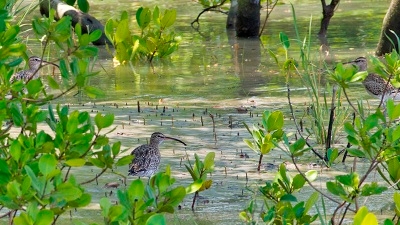India’s coastal zone is endowed with abundant coastal and marine ecosystems that include a wide range of mangroves, coral reefs, sea grasses, salt marshes, mud flats, estuaries, lagoons, and unique marine and coastal flora and fauna. The Sundarbans – shared between India and Bangladesh – are the largest contiguous mangroves in the world. India also has major stocks of corals, fish, marine mammals, reptiles and turtles, sea grass meadows, and abundant sea weeds. Coastal fishing employs a million people full time, and the post-harvest fisheries employ another 1.2 million.
However, in spite of their ecological richness and contribution to the national economy, India’s coastal and marine areas have not received adequate protection and are under stress. About 34% of India’s mangroves were destroyed during 1950-2000 (although substantial restoration and conservation has taken place over the past 10 years); almost all coral areas are threatened; marine fish stocks are declining; and several species of ornamental fish and sea cucumbers are fast disappearing. Such rapid depletion and degradation, unless arrested, will impact the livelihood, health and well being of the coastal population, affecting in turn prospects for India’s sustained economic growth.
India’s coastal and marine environments are threatened by the lack of integrated development planning, especially given the large concentration of towns, petrochemical complexes and industries along India’s coasts. Only 9% of wastewater from India’s coastal towns is treated before entering coastal waters, adding to their already heavy chemical burden from the huge volumes of agricultural run-off that routinely flow into them. In addition, large numbers of coastal people remain dependent on natural resources for their livelihoods, in the absence of alternative livelihood opportunities. However, the returns from traditional fishing are diminishing due to environmental degradation and over-exploitation. Risks from climate change will only accentuate these challenges.
Resources for the conservation of these sensitive coastal and marine ecosystems remain scarce, and the capacity, skills, and knowledge for managing them in a sustainable manner remain inadequate.


